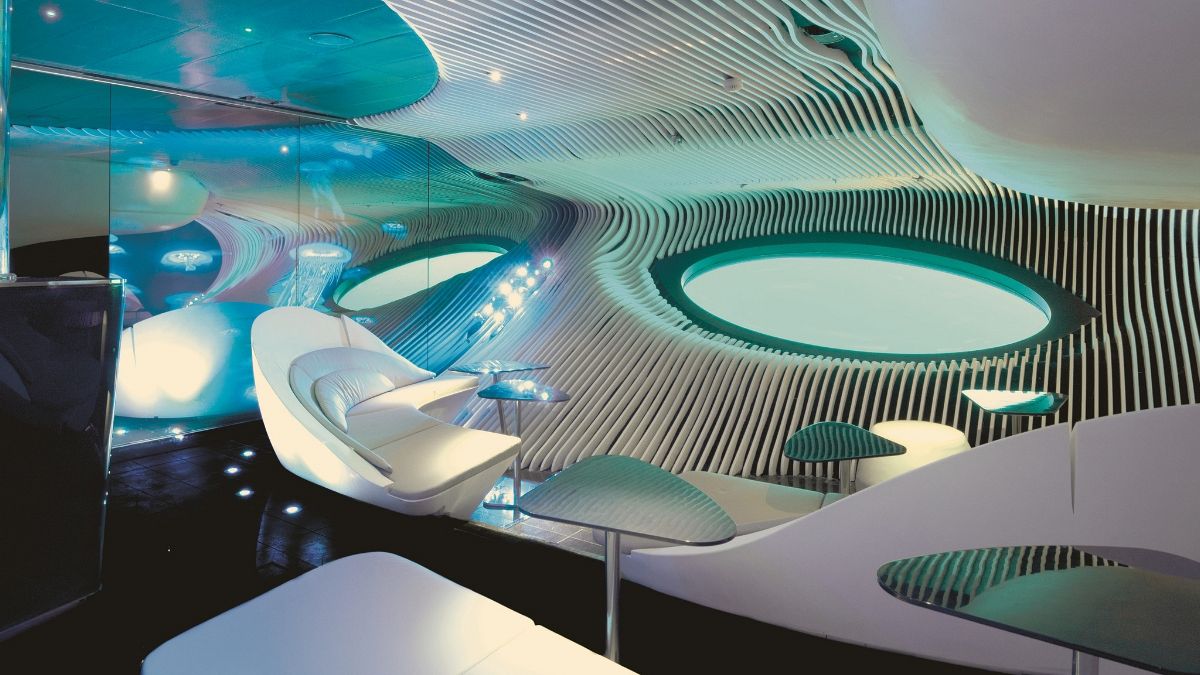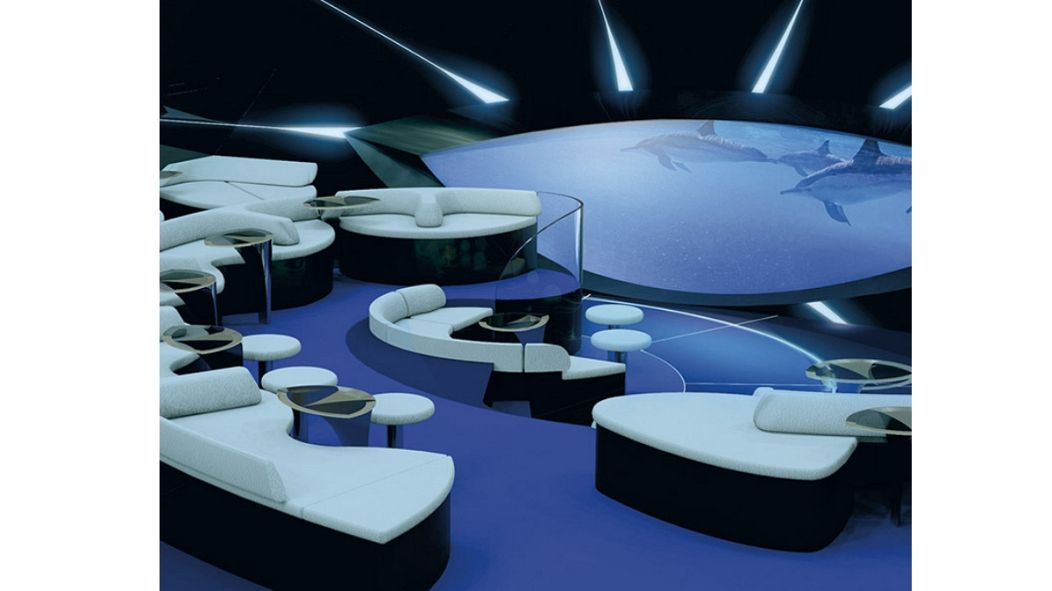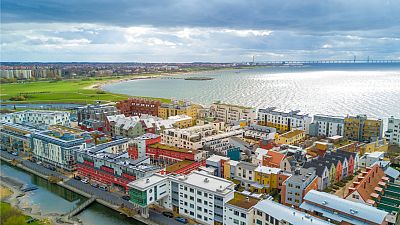"This bay is made of 19 coats of glass and it's 35 centimeters thick"
Imagine being underwater and hearing the calming sound of the whales whilst being comfortably sitting in a luxurious lounge. You would be cruising in the "Blue Eye", a room of Ponant's latest yacht Le Lapérouse, located in the hull and fully made with glass allowing for a clear view (and sound) of what's happening 3 meters deep in the ocean. This innovation is French designer and architect, Jacques Rougerie, masterpiece. Here is the full story.
When did your fascination for the ocean first sparked?
"Ever since I was a little boy, I have always been passionate about the ocean. My very first memories are at the beach where I learned how to swim before I knew how to walk! I lived by the sea in Abidjan (Ivory Coast) up until I was 10. The first books I read were about marine adventures such as Twenty Thousand Leagues Under the Sea by Jules Verne and I remember being extremely passionate about legendary explorer Jacques Cousteau's adventures."
Do you still live by the water?
"Of course. I’m not terrestrial, I'm an inhabitant of the underwater world. I've been living on a boat docked in Paris for thirty years now. I've crossed the Atlantic on a trimaran whose hull was completely transparent to observe the migration of whales. As an architect, I designed three underwater houses in which I lived and hold a world record for underwater living. There's a lot of future in the ocean world. Nowadays, it’s at the core of a lot of ongoing debates about renewable energy, ecology, and the agriculture of tomorrow."
What is the “Blue Eye” lounge?
"Ponant asked me to adapt my technologies and techniques to their ship Lapérouse, so that the public could witness what goes on under the sea. It's a first. To create this unique multi-sensorial room, we had to recreate a whole other "world". For the conception of the "Blue Eye", my reflection path was similar to Leonardo da Vinci's. I focused on bio-mimetism – borrowing attributes of the underwater world without simply reproducing them."
How long did it take to make this project?
"It took me one year to come up with the concept and design and another one to get all the necessary approvals. The most challenging part was constructing the huge bay window integrated in the hull. This bay is made of 19 coats of glass and it's 35 centimeters thick. It's actually more resistant than the hull itself! It’s a real technical achievement as it's the first time ever that a liner has a piece of his hull made out of glass. In this unique yacht, people can experience an underwater cruise, 3 meters deep in the ocean. Most of the aquatic fauna (70%) lives between 0 and 50 meters under water. Whales, dolphins, turtles, tuna, jellyfish, all live at this depth. When you sail through a coral reef or a lagoon, you can see everything, even shipwrecks!"
How did you translate your concept design-wise?
"The windows of the lounge are inspired by whales' eyes.We used different techniques for the rest of the room. We laser-cut white strips to make them look like baleens and attached them to the walls. The seats have the shape of shells and sounds come out of them. We wanted the public to feel a certain wellness and comfort in a non-terrestrial environment, transport them to the marine universe so that their whole body can experience it. To achieve this, I worked closely with many artists. It truly is a team effort."
What is the multi-sensory experience?
"Michel Redolfi, a contemporary music composer and sound design expert, composed an original soundtrack for the “Blue Eye” and offer guests an experience in acoustic immersion. Christophe Leclerc, the lighting designer, installed leds all around the hull, underwater, to observe biodiversity during night time because it's mostly during the night that the predators come out. We installed two cameras at the bow of the boat to film and broadcast the underwater activity live on an enormous screen installed in the lounge. We also built in two hydrophones to record the songs of the whales that are retransmitted in the salon and the captain's cabin so that he knows in which direction to sail for the passengers to admire them."
Find out more about Ponant Explorers cruises on ponant.com




